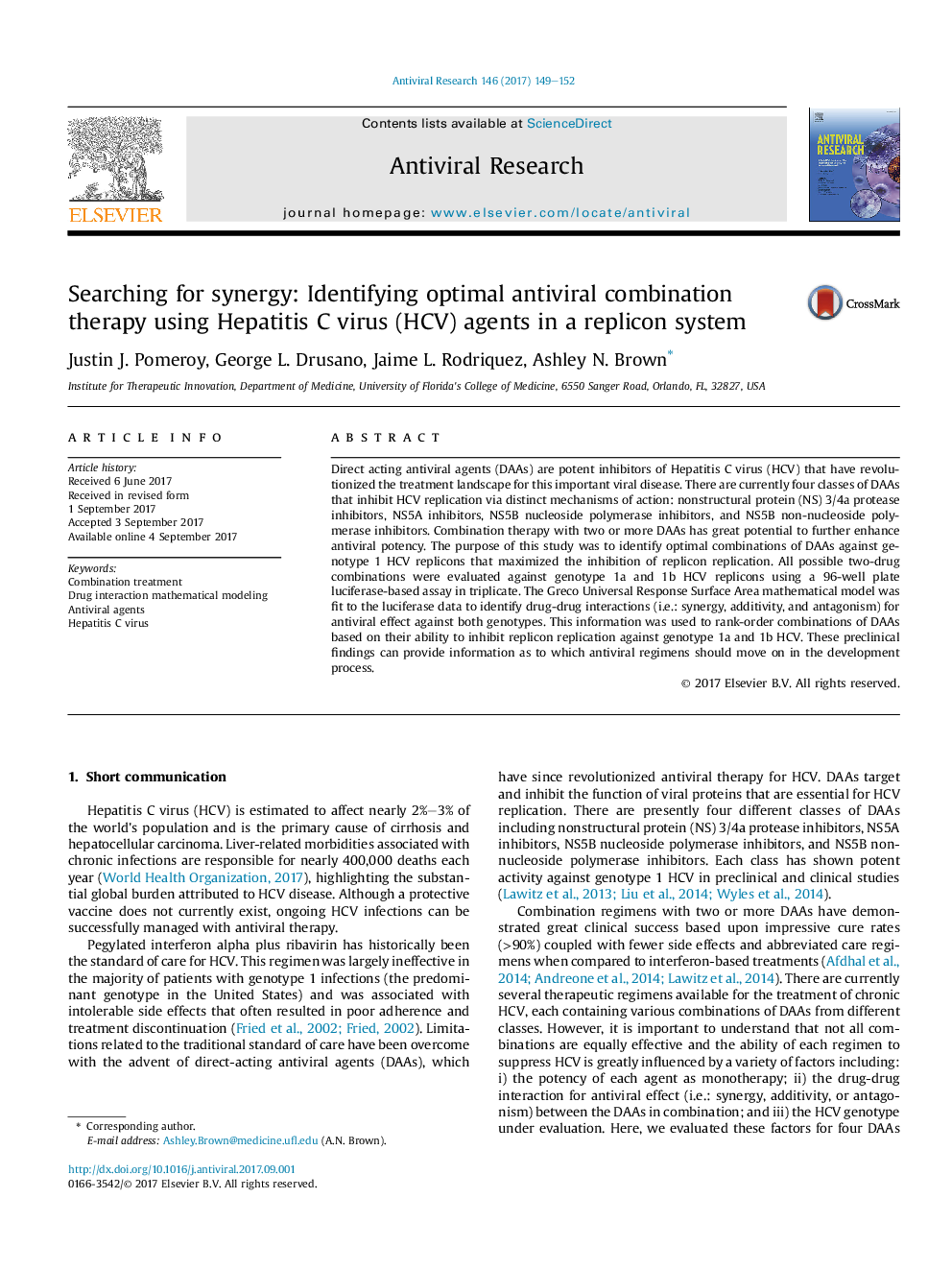| Article ID | Journal | Published Year | Pages | File Type |
|---|---|---|---|---|
| 5551683 | Antiviral Research | 2017 | 4 Pages |
â¢We evaluated the effectiveness of direct acting antiviral agents (DAAs) in combination against genotype 1a and 1b HCV.â¢We employed a mathematical model to define drug-drug interactions for antiviral effect for all combinations of DAAs.â¢We rank ordered the combinations based on the interaction (i.e. synergy/additivity) between compounds for HCV suppression.â¢These methods are a rationale strategy for selecting and ranking DAA combinations for further preclinical development.
Direct acting antiviral agents (DAAs) are potent inhibitors of Hepatitis C virus (HCV) that have revolutionized the treatment landscape for this important viral disease. There are currently four classes of DAAs that inhibit HCV replication via distinct mechanisms of action: nonstructural protein (NS) 3/4a protease inhibitors, NS5A inhibitors, NS5B nucleoside polymerase inhibitors, and NS5B non-nucleoside polymerase inhibitors. Combination therapy with two or more DAAs has great potential to further enhance antiviral potency. The purpose of this study was to identify optimal combinations of DAAs against genotype 1 HCV replicons that maximized the inhibition of replicon replication. All possible two-drug combinations were evaluated against genotype 1a and 1b HCV replicons using a 96-well plate luciferase-based assay in triplicate. The Greco Universal Response Surface Area mathematical model was fit to the luciferase data to identify drug-drug interactions (i.e.: synergy, additivity, and antagonism) for antiviral effect against both genotypes. This information was used to rank-order combinations of DAAs based on their ability to inhibit replicon replication against genotype 1a and 1b HCV. These preclinical findings can provide information as to which antiviral regimens should move on in the development process.
